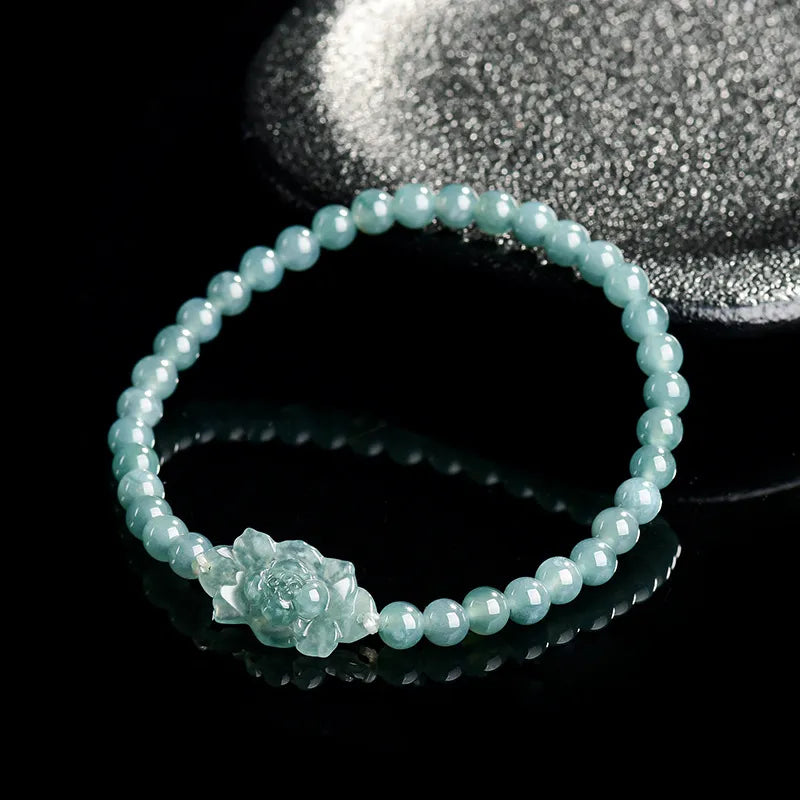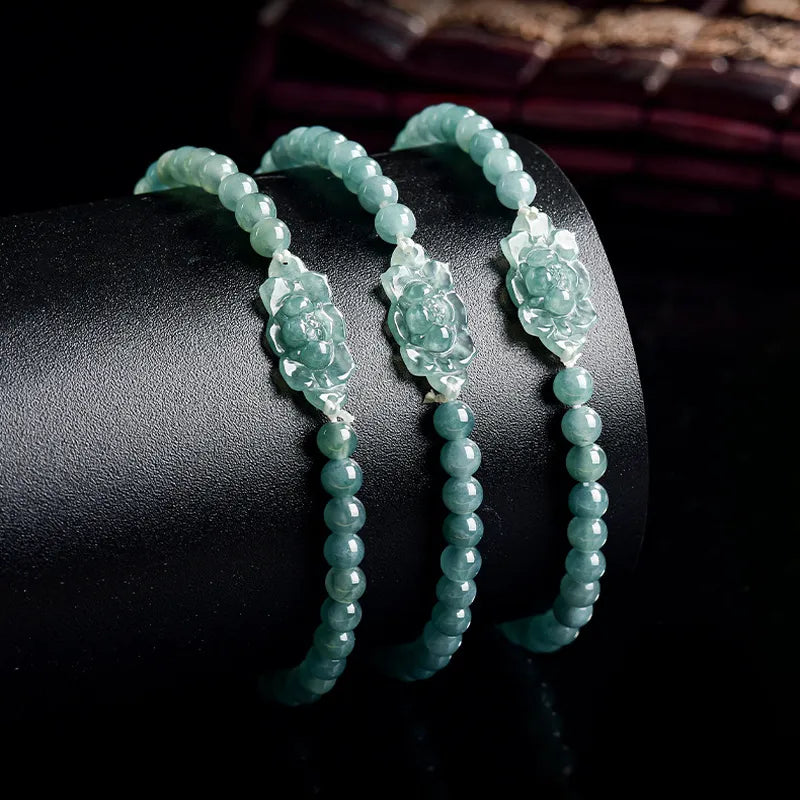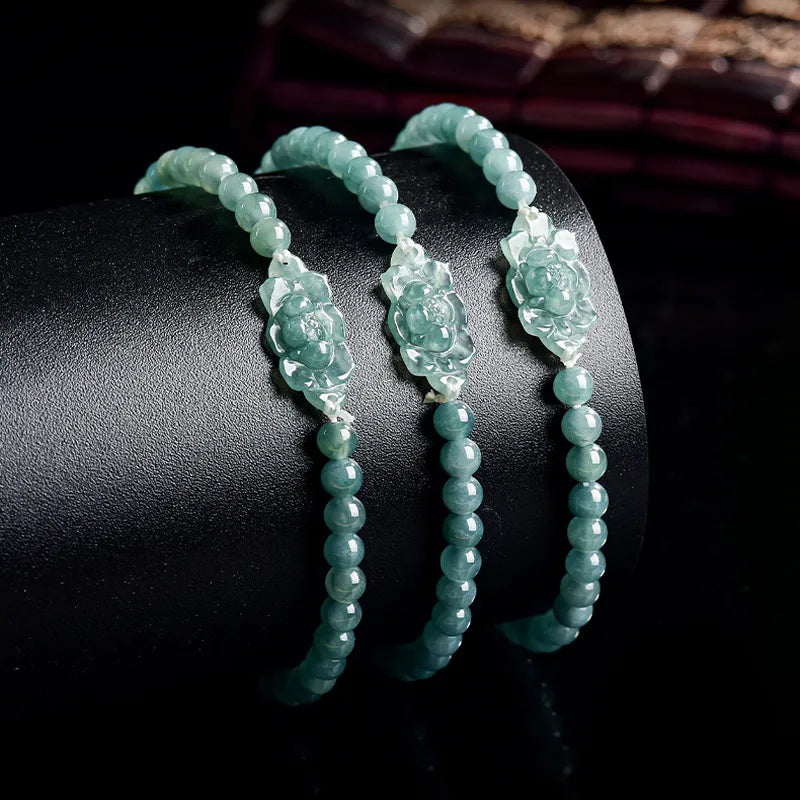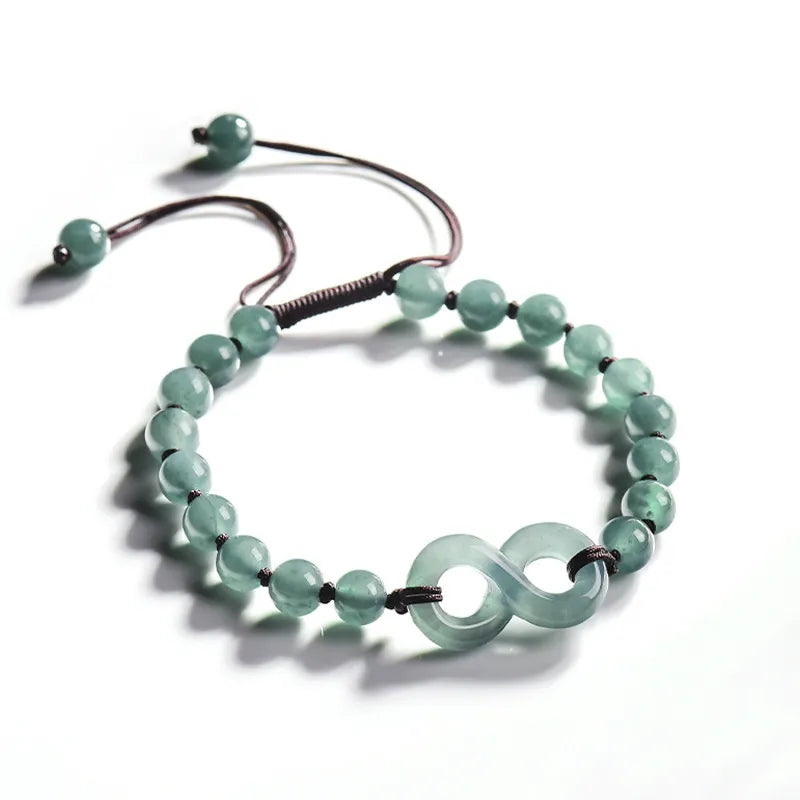How to Evaluate the Polishing Quality of Jade Bangles: A Detailed Guide
The polishing quality of a jade bangle directly impacts its aesthetic appeal, durability, and value. Unlike synthetic materials, natural jade requires meticulous craftsmanship to reveal its inherent beauty. Below, we explore practical methods to assess polishing quality through visual inspection, tactile feedback, and structural analysis.
Visual Indicators of Polishing Quality
The surface finish of a jade bangle reveals much about its polishing standards.
- Glass-Like Luster: High-quality polishing creates a bright, reflective surface akin to glass. Rotate the bangle under natural light; genuine jade should display consistent shine without overly harsh “glare.” Dull or patchy reflections may indicate uneven polishing.
- Microscopic Textures: Use a 10x-20x magnifying glass to examine the surface. Well-polished jade exhibits fine, uniform “microwaves” (microscopic ridges from polishing), while poor craftsmanship leaves visible scratches, pits, or orange-peel textures.
- Color Consistency: Polishing enhances color depth. Observe if hues appear vibrant and evenly distributed. Blotchy or faded areas suggest subpar polishing, which fails to highlight the stone’s natural pigmentation.
Pro Tip: Avoid judging polish under direct sunlight, as intense light can mask imperfections. Soft, diffused lighting works best for accurate assessment.
Tactile and Structural Analysis
The feel and structural integrity of a bangle provide clues about its polishing process.
- Smoothness: Gently run your fingertips along the inner and outer edges. Premium polishing leaves no rough patches or sharp edges. If the bangle feels gritty or catches on skin, it may have been rushed during finishing.
- Edge Uniformity: Check the transition between the bangle’s body and its inner/outer rims. High-quality polishing ensures seamless curves, while poor craftsmanship results in abrupt angles or uneven thickness.
- Weight Distribution: A well-polished bangle feels balanced when rotated. If one side feels heavier or thicker, it may indicate uneven material removal during polishing.
Testing Method: Hold the bangle vertically and tap it lightly against your teeth (a traditional jeweler’s trick). A clear, ringing sound suggests solidity and even polishing, while a dull thud may reveal internal flaws or poor surface treatment.
Common Polishing Flaws and Their Implications
Identifying flaws helps determine acceptable quality thresholds.
- Over-Polishing: Excessive grinding can thin the bangle, making it prone to cracking. Look for “waviness” along the edges or a translucent, papery appearance, which indicates over-worked material.
- Under-Polishing: Leaving the surface rough or matte reduces luster and comfort. This is often seen in low-cost bangles where shortcuts are taken to cut production time.
- Artificial Enhancements: Some polishers use wax or fillers to mask imperfections. Test by gently warming the bangle (e.g., holding it near a lamp for 10 seconds). If it develops a sticky residue or unusual odor, it may have been artificially treated.
Cultural Context: In traditional markets, a “worn” polish (slightly matte from natural aging) is valued for its authenticity, while modern consumers often prefer high-gloss finishes. Clarify your preference before purchase.
Advanced Techniques for Discerning Buyers
For those seeking deeper verification, these methods require minimal tools.
- Water Droplet Test: Place a drop of water on the bangle’s surface. A well-polished stone will retain the droplet’s shape for several seconds due to its smooth texture, while poor polishing causes rapid absorption or spreading.
- Infrared Light Inspection: Shine an infrared flashlight (commonly available) on the bangle. Natural jade reflects a warm, diffuse glow, whereas synthetic materials or poorly polished stones may show uneven reflections or artificial shine.
- Sound Resonance: Strike the bangle gently with a wooden stick. A high-pitched, sustained note indicates dense, evenly polished material, while a short, flat sound suggests internal inconsistencies.
Expert Insight: Jewelers often use “polishing marks” as a quality indicator. Tiny, parallel lines from fine-grit sanding are acceptable, but deep, irregular grooves signal careless craftsmanship.
Long-Term Durability and Polishing
A bangle’s polish affects its lifespan.
- Scratch Resistance: Well-polished jade resists minor abrasions. Lightly scratch the surface with a copper penny (hardness 3.5). Genuine jade (hardness 6.5–7) should remain unmarked, while softer materials or poor polish will show lines.
- Aging Patterns: Over decades, high-quality polish develops a “patina” (a soft, creamy sheen) from natural oils and wear. Conversely, low-grade polish may flake or discolor.
Maintenance Tip: Store polished jade bangles separately to avoid scratches. Clean with a soft, damp cloth and avoid ultrasonic cleaners, which can damage delicate finishes.
Final Considerations
Polishing quality is a balance between artistry and material science. While perfect symmetry is rare in natural jade, a well-executed polish should enhance the stone’s innate character without masking flaws. Prioritize craftsmanship over superficial shine, and always inspect bangles from multiple angles before purchasing.






